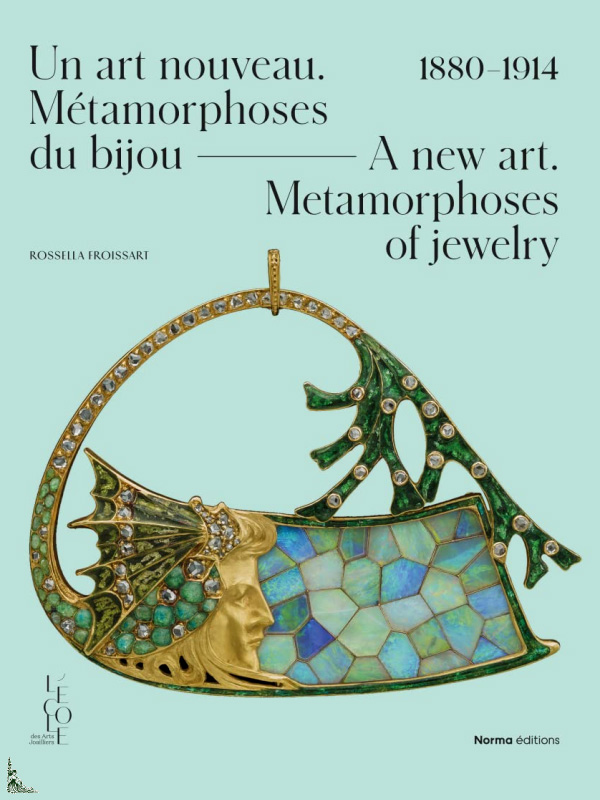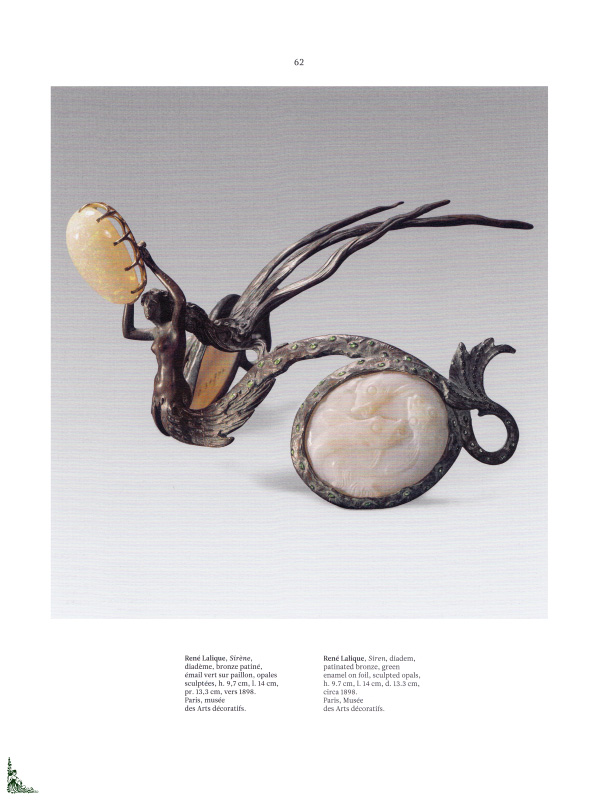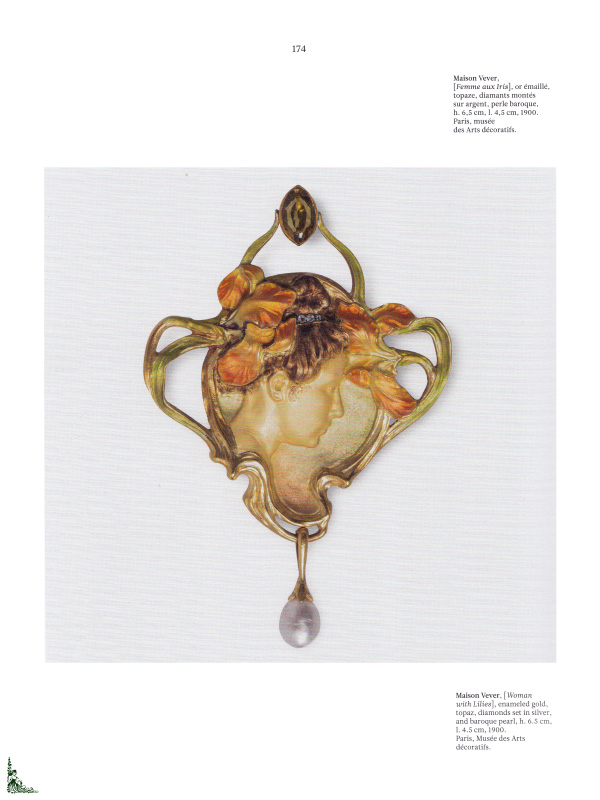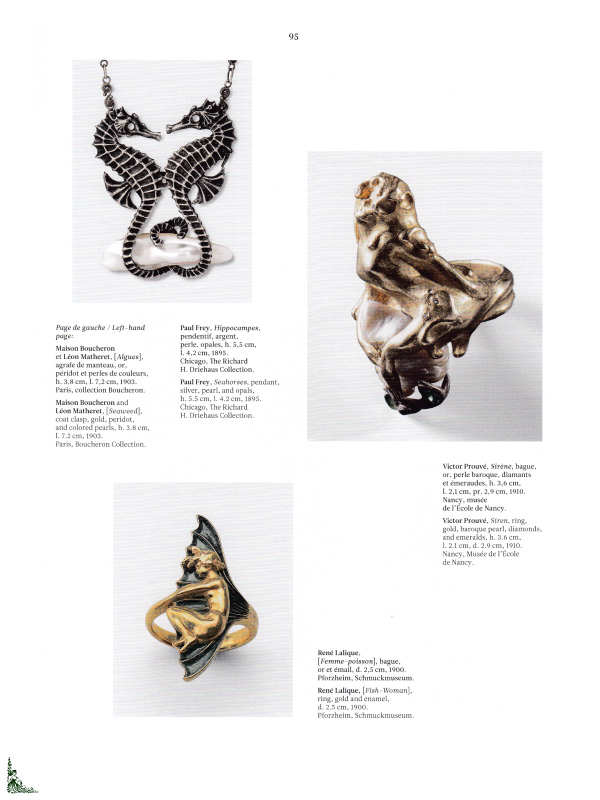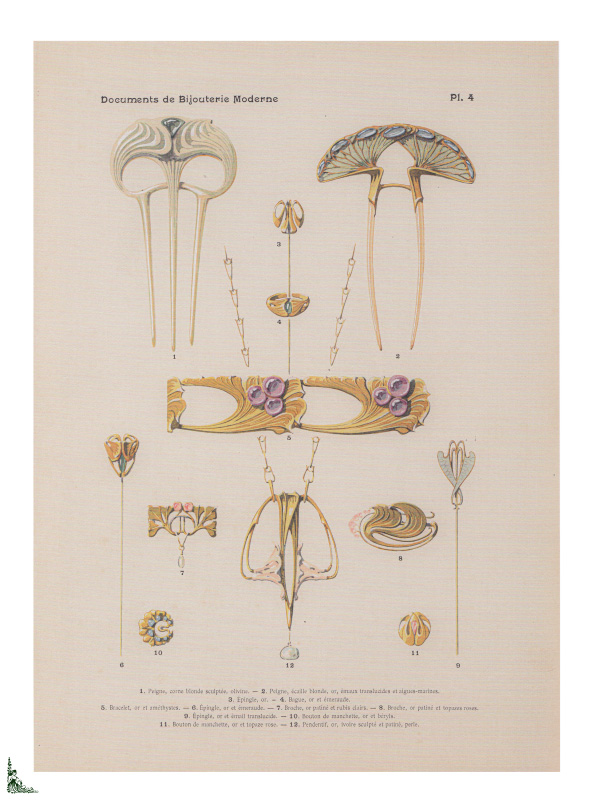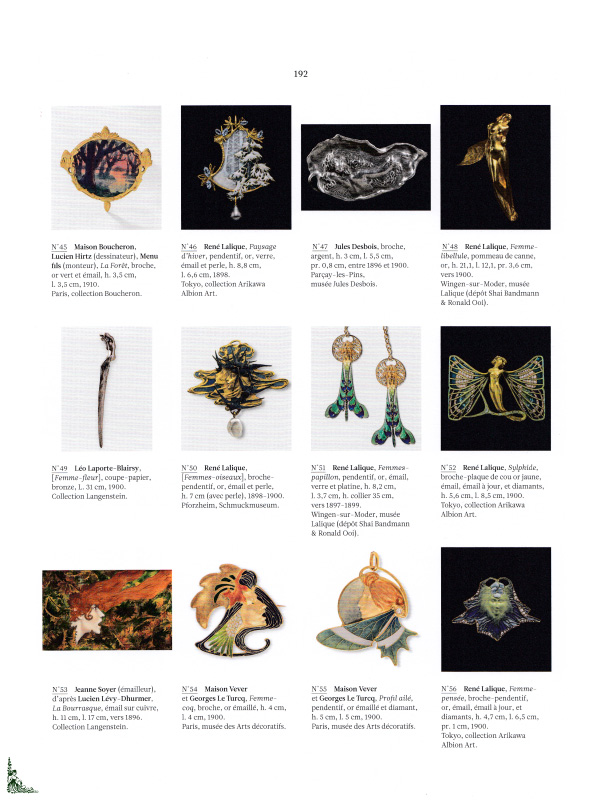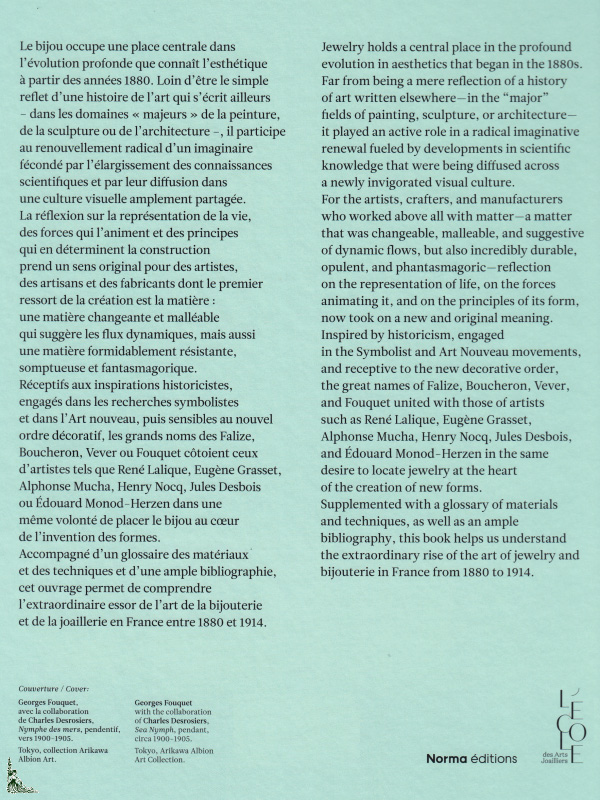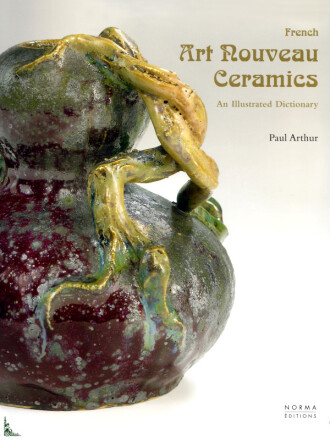A new art 1880-1914 - Metamorphoses of jewelry
Contenido del libro
| Autores : | Rossella Froissart & Florent Guérif |
| Editor : | L'École des Arts Joalliers / Norma (2023) |
| Encuadernación : | Hardcover (208 full color pages) 8 inches x 11-½ inches |
| Lenguas : | French/English |
| ISBN : | 978-2-37666-075-0 |
| EAN : | 9782376660750 |
Descripción
A new art 1880-1914 - Metamorphoses of jewelry, by R. Froissart, Ed. Norma, 8 inches x 11-½ inches ( 21 cm x 29 cm ), hardcover book with 208 full color pages - French/English edition
This hardcovered book with 208 pages and great color illustrations presents the Art Nouveau jewelry (1880 - 1914).
Jewelry holds a central place in the profound evolution in aesthetics that began in the 1880s. Far from being a mere reflection of a history of art written elsewhere - in the "major" fields of painting, sculpture, or architecture -, it played an active role in the radical imaginative renewal fueled by developments in scientific knowledge that were being diffused across a newly invigorated visual culture.
For the artists, crafters and manufacturers who worked above all with matter - a matter that was changeable, malleable, and suggestive of dynamic flows, but also incredibly durable, opulent, and phantasmagoric - reflection on the representation of life, on the forces animating it, and on the principles of its form, now took on a new original meaning.
Inspired by historicism, engaged in the Symbolist and Art Nouveau movements, and receptive to the new decorative order, the great names of Falize, Boucheron, Vever and Fouquet united with those of artists such as René Lalique, Eugène Grasset, Alphonse Mucha, Henry Nocq, Jules Desbois and Édouard Monod-Herzen in the same desire to locate jewelry at the heart of the creation of new forms.
Supplemented with a glossary of materials and techniques, as well as an ample bibliography, this book helps us understand the extraordinary rise of the art of jewelry and bijouterie in France from 1880 to 1914.
Contents:
- Foreword by Lise MacDonald, President of the School of Jewelry Arts and
Nicolas Bos, President & CEO of Van Cleef & Appels - Introduction
- Romantic's final splendor and the first sparks of symbolism
- Reinvention and invention
- Fairy-like nature
- Bloomings
- Proliferating nature
- Metamorphoses
- Ornamental nature
- Arabesques
- An "extraordinary living geometry"
- Conclusion
- Crafting Art Nouveau, by Florent Guérif
- Harnessing, understanding, and exploiting knowledge in the 19th century
- A savoir-faire combined with industrial knowledge
- Preserving and sustaining an endangered trade
- Glossary by Paul Paradis
- Annexes
- Catalogue of works exhibited
- Sources
- Bibliography
- Index
The texts are written in French and in English by Rossella Froissart and Florent Guérif.
 Description française
Description française
Un Art Nouveau 1880-1914 - Métamorphoses du bijou
Détails du livre
| Auteur : | Rossella Froissart & Florent Guérif |
| Éditeur : | L'École des Arts Joalliers / Norma (2023) |
| Reliure : | Relié (208 pages couleur) 21 cm x 29 cm ( 8 inches x 11-½ inches ) |
| Langue(s) : | Français/Anglais |
| ISBN : | 978-2-37666-075-0 |
| EAN : | 9782376660750 |
Description
Un Art Nouveau 1880-1914 - Métamorphoses du bijou, de R. Froissart, Ed. Norma, 21 cm x 29 cm, relié avec 208 pages couleurs - Edition bilingue Français/Anglais
Cet ouvrage relié de 208 pages couleurs très bien illustré présente les bijoux Art Nouveau (1880 - 1914).
Le bijou occupe une place centrale dans l'évolution que connait l'esthétique à partir des années 1880. Loin d'être le simple reflet d'une histoire de l'art qui s'écrit ailleurs - dans les domaines « majeurs » de la peinture, de la sculpture ou de l'architecture -, il participe au renouvellement radical d'un imaginaire fécondé par l'élargissement des connaissances scientifiques et par leur diffusion dans une culture visuelle amplement partagée.
La réflexion sur la représentation de la vie, des forces qui animent et des principes qui en déterminent la construction prend un sens original pour des artistes, des artisans et des fabricants dont le premier ressort de la création est la matière : une matière changeante et malléable qui suggère les flux dynamiques, mais aussi une matière formidablement résistante, somptueuse et fantasmagorique.
Réceptifs aux inspirations historicistes, engagés dans les recherches symbolistes et dans l'Art Nouveau, puis sensibles au nouvel ordre décoratif, les grands noms des Falize, Boucheron, Vever ou Fouquet côtoient ceux d'artistes tels que René Lalique, Eugène Grasset, Alphonse Mucha, Henry Nocq, Jules Desbois ou Édouard Monod-Herzen dans une même volonté de placer le bijou au coeur de l'invention des formes.
Accompagné d'un glossaire des matériaux et des techniques et d'une ample bibliographie, cet ouvrage permet de comprendre l'extraordinaire essor de l'art de la bijouterie et de la joaillerie en France entre 1880 et 1914.
Principaux chapitres de l'ouvrage :
- Préface de Lise MacDonald, présidente de l'École des Arts Joailliers et
Nicolas Bos, Président & CEO de Van Cleef & Appels - Introduction
- Derniers feux du romantisme et lueurs symboliques
- Réinventer, inventer
- Natures féériques
- Éclosions
- Une nature proliférante
- Métamorphoses
- Natures ornementales
- Arabesques
- Une "extraordinaire géométrie vivante"
- Conclusion
- Façonner l'Art Nouveau, de Florent Guérif
- Collectionner, comprendre et exploiter le savoir au XIXe siècle
- Un savoir-faire artisanal et industriel
- Préserver et pérenniser un métier en danger
- Glossaire par Paul Paradis
- Annexes
- Catalogue des oeuvres exposées
- Sources
- Bibliographie
- Index
Les textes en Français et en Anglais sont de Rossella Froissart et Florent Guérif.


